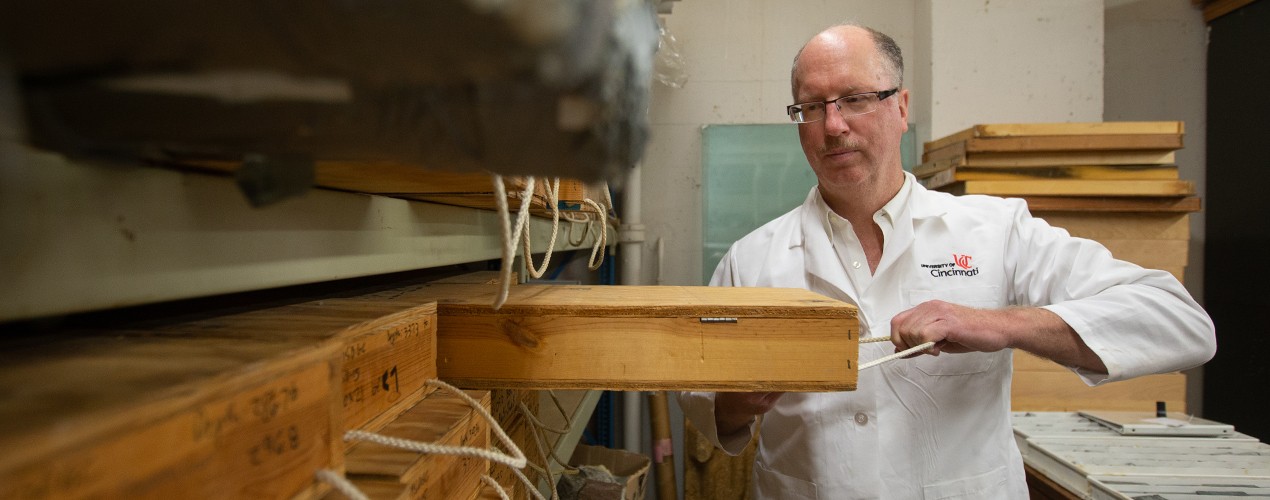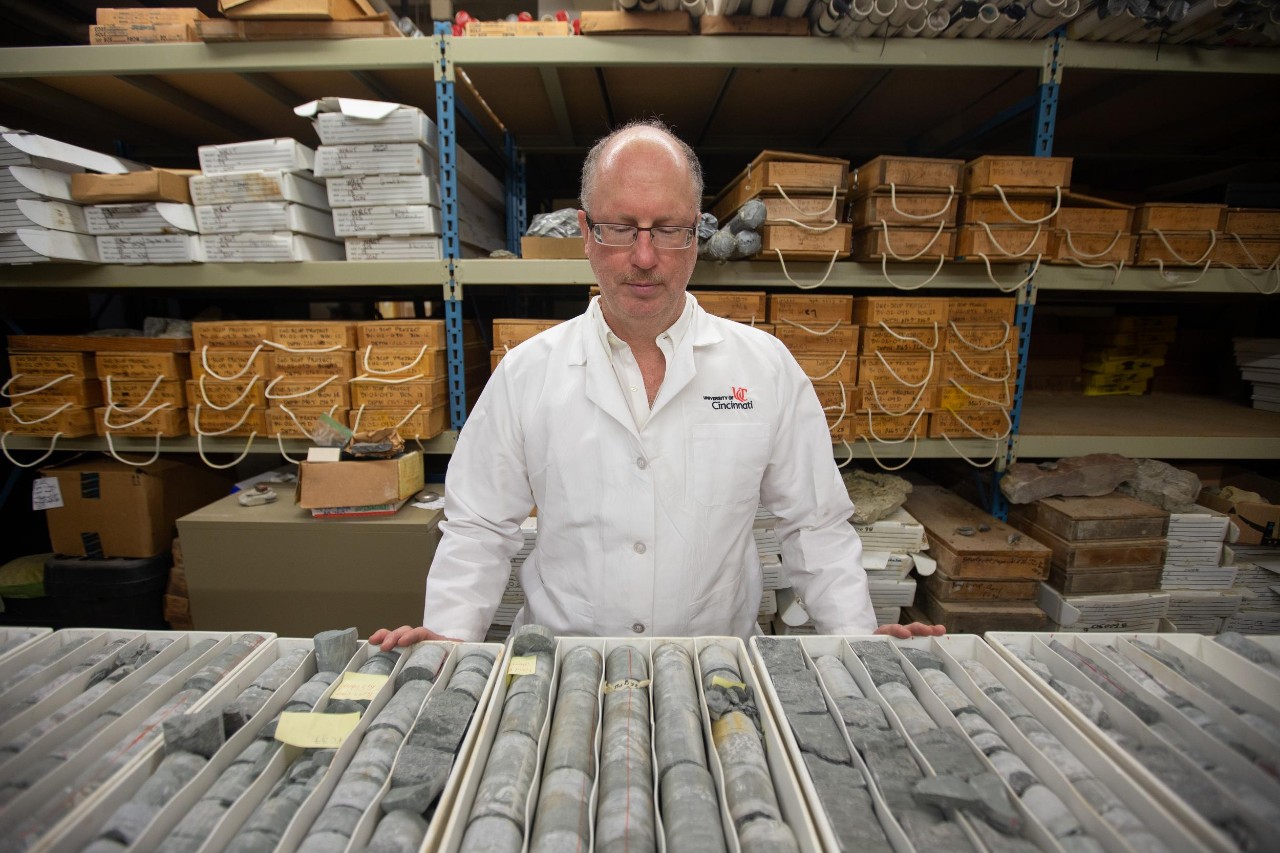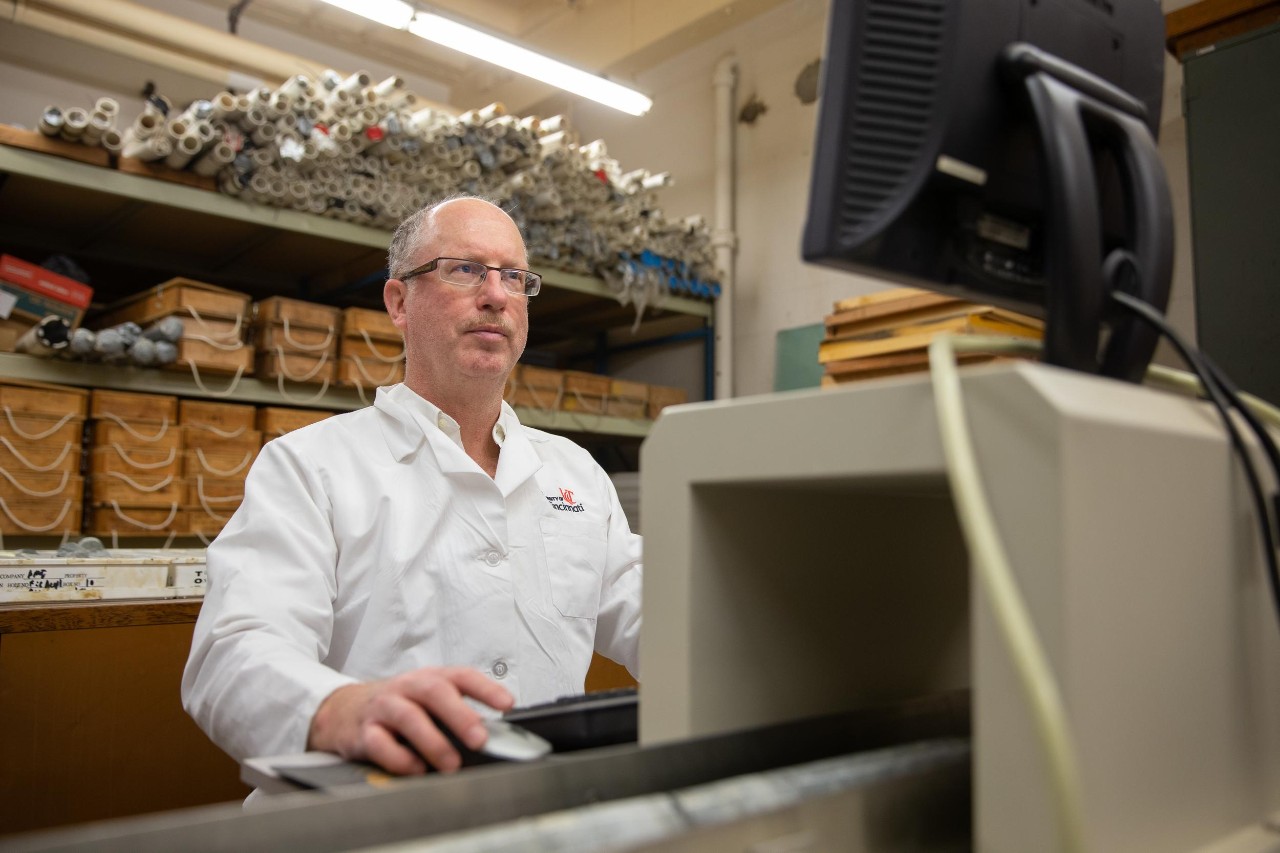
‘Snowball Earth’ might have been slushball
Geologists find evidence that planet was not entirely frozen during ice age 635 million years ago
At least five ice ages have befallen Earth, including one 635 million years ago that created glaciers from pole to pole.
Called the Marinoan Ice Age, it’s named for the part of Australia where geologic evidence was first collected in the 1970s.
Scientists say the Marinoan Ice Age was one of the most extreme in the planet’s history, creating glacial ice that persisted for 15 million years.
But new evidence collected in the eastern Shennongjia Forestry District of China’s Hubei Province suggests the Earth was not completely frozen — at least not toward the end of the ice age. Instead, there were patches of open water in some of the shallow mid-latitude seas, based on geologic samples dating back to that period.
“We called this ice age ‘Snowball Earth,’” said Thomas Algeo, a professor of geosciences at the University of Cincinnati’s College of Arts and Sciences. “We believed that Earth had frozen over entirely during this long ice age. But maybe it was more of a ‘Slushball Earth.’”
The study was published in the journal Nature Communications.

UC geosciences Professor Thomas Algeo stands in front of rock cores that he and his students analyze in his lab. Photo/Andrew Higley/UC Marketing + Brand
Scientists have found a seaweed, called benthic phototrophic macroalgae, in black shale dating back more than 600 million years. This algae lives at the bottom of the sea and needs light from the sun to convert water and carbon dioxide into energy through photosynthesis.
A team of geoscientists from China, the United Kingdom and the United States conducted an isotopic analysis and found that habitable open-ocean conditions were more extensive than previously thought, extending into oceans that fall between the tropics and the polar regions and providing refuge for single-celled and multi-celled organisms during the waning stages of the Marinoan ice age.
We don’t know for sure what triggered these ice ages, but my suspicion is it was related to multicellular organisms that removed carbon from the atmosphere.
Thomas Algeo, UC Professor of Geosciences
Lead author Huyue Song from the China University of Geosciences said while deep water likely did not contain oxygen to support life during this period, the shallow seas did.
“We present a new Snowball Earth model in which open waters existed in both low- and mid-latitude oceans,” Song said.
Song said the ice age likely saw many intervals of freezing and melting over the span of 15 million years. And under these conditions, life could have persisted, Song said.
“We found that the Marinoan glaciation was dynamic. There may have existed potential open-water conditions in the low and middle latitudes several times,” Song said. “In addition, these conditions in surface waters may have been more widespread and more sustainable than previously thought and may have allowed a rapid rebound of the biosphere after the Marinoan Snowball Earth.”

UC geosciences Professor Thomas Algeo is studying life on Earth millions of years ago. Photo/Andrew Higley/UC Marketing + Brand
Paradoxically, UC’s Algeo said, these refuges of life likely helped to warm the planet, ending the Marinoan ice age. The algae in the water released carbon dioxide into the atmosphere over time, gradually thawing the glaciers.
“One of the general take-home messages is how much the biosphere can influence the carbon cycle and climate,” he said. “We know that carbon dioxide is one of the most important greenhouse gases. So we see how changes in the carbon cycle have an impact on the global climate.”
Algeo said the study raises tantalizing questions about other ice ages, particularly the second one during the Cryogenian Period that scientists also believe created near-total glaciation of the planet.
“We don’t know for sure what triggered these ice ages, but my suspicion is it was related to multicellular organisms that removed carbon from the atmosphere, leading to carbon burial and the cooling of the Earth,” Algeo said. “Today, we’re releasing carbon quickly in huge amounts and it is having a big impact on global climate.”
The study was supported by grants from the National Natural Science Foundation of China and the China Geological Survey.
Next Lives Here
The University of Cincinnati is leading public urban universities into a new era of innovation and impact. Our faculty, staff and students are saving lives, changing outcomes and bending the future in our city's direction. Next Lives Here.
Related Stories
Senior peer career coaches graduate with resumes ready
April 17, 2021
Profiles three senior peer career coaches in the University of Cincinnati's Bearcat Promise Career Studio
UC students recognized for achievement in undergraduate research
April 12, 2021
Undergraduate student researchers in sciences and humanities recognized in 2021
UC students recognized for achievement in undergraduate research
April 29, 2020
Each spring, the University of Cincinnati’s Division of Experience-Based Learning and Career Education (ELCE) honors students in experience-based learning programs.
Listen: Cincy Playhouse shares CCM audio plays
May 28, 2021
Each audio play is its own story, and you can listen to these pieces for free in any order you choose. They represent a year-long collaboration that reached into many corners of Cincinnati. Students from all over UC (CCM Acting, Sound Design, Stage Management, Commercial Music Production, Digital Media, and the College of Arts & Sciences’ Fiction PhD program) and local professional writers (YA author Liz Coley and musician, comedian and raconteur Paul Strickland) came together to make something truly special. Paul Strickland's play will be available soon. The Playhouse is assisting CCM by hosting and helping to promote these free audio plays.
UC staff have elected their 2021-23 Staff Senators
June 8, 2021
Join us in congratulating the 2021-23 new Staff Senate members! Elections were held in early May, and new senators will begin their two-year term in July 2021. All UC staff are encouraged to be part of the enthusiasm and excitement for our new senators by attending the Staff Senate online meeting via WebEx, June 30, 9-11 a.m.
UC LGBTQ Center founder takes on new diversity role
June 1, 2021
When Leisan Smith, ’99, ME ’03, began work this year as the inaugural chief equity officer at the prestigious Columbus School for Girls, the school’s staff and faculty were thrilled. The job description, they said, “was written for you.”
The making of a successful Faculty & Staff Campaign
May 25, 2021
More than one-third of UC’s nearly 7,000 faculty and staff have already contributed to the 2020-21 Faculty & Staff Campaign, putting the goal of 45% within reach.
Engineering student shifts from the stage to the lab
May 14, 2021
Garek Bushnell came to the University of Cincinnati with a singular goal: to study acting. He graduated in April 2021 with his bachelor’s degree in chemical engineering instead. Bushnell’s path between these two seemingly dissimilar fields is rooted in his mindset that following your passion will drive your determination to succeed – even if that passion comes from an unexpected source.
UC Foundation Board of Trustees elects six new members
May 11, 2021
The University of Cincinnati Foundation Board of Trustees has elected six new trustees to its 52-member board: Paul D. Green, BBA ’90; Lourdes J. Harshe, BBA ’92; Anndréa M. Moore, BBA’10; Arun C. Murthy, BBA ’95; Kirk L. Perry, BBA ’90, HON ‘15; and Christopher J. Van Pelt, BA ’91, MA ’93.
UC Blue Ash student presents research at a major international conference
July 13, 2021
When Aqsa Raja began an undergraduate research project last spring as part of her Honors Program experience at the University of Cincinnati Blue Ash College, she never imagined it would lead to a presentation just a year later at a major international conference for microbiologists.
